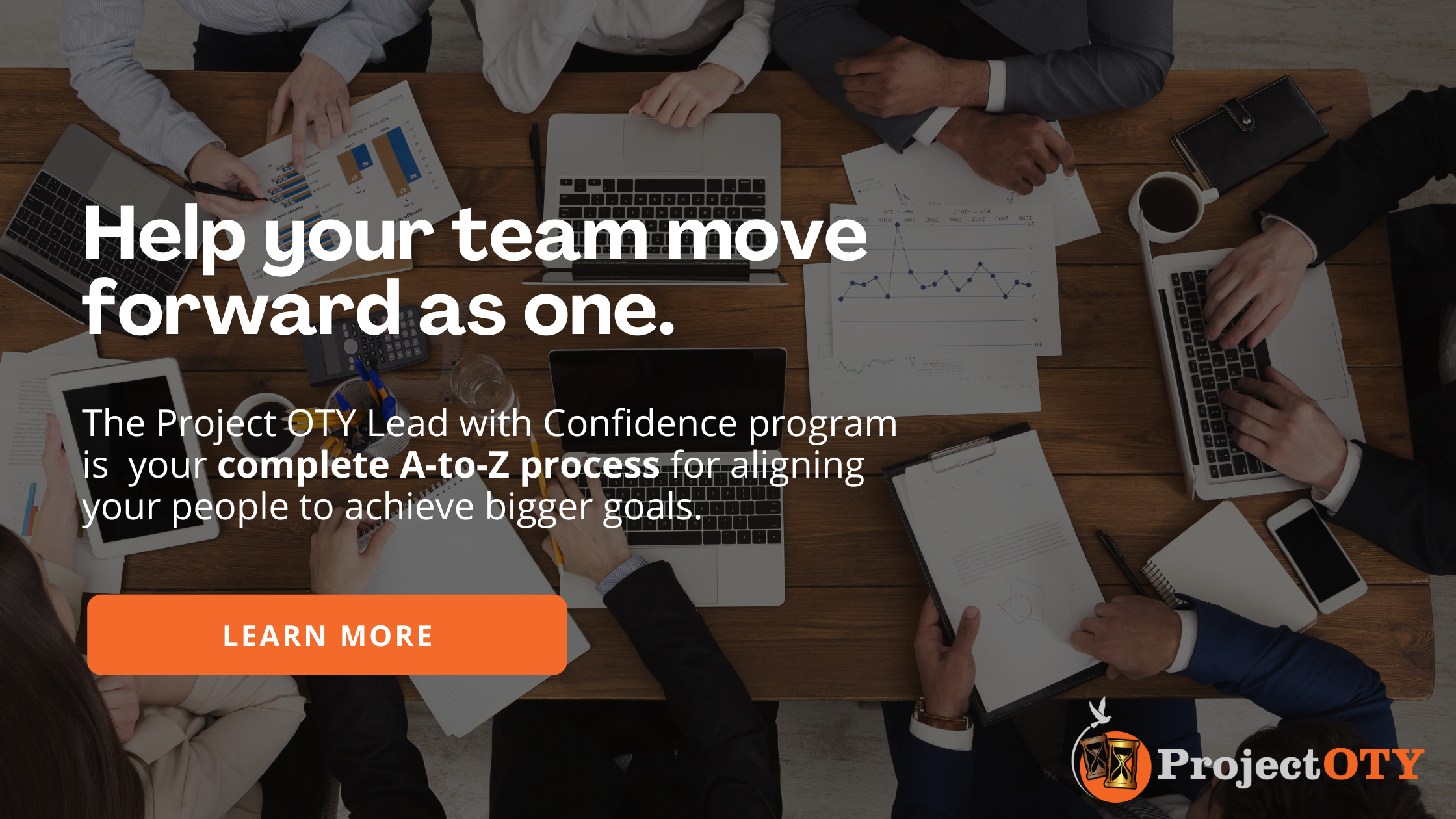The most common advice from successful innovators and thought leaders is aimed at promoting consistency.
It’s no secret that the road to success is shorter when progress happens in a consistent manner. You can’t achieve the goals you set for your future and your team, without consistency.
At Project OTY, we have a proven track record of leading business teams and schools to foster high-performing work environments and leaders. Based on our experience, we want to share the top considerations you should keep in mind.
We know – consistency can be a struggle. This issue is compounded in organizations that are actively trying to build their teams and scale toward success.
First, we need to start with an essential foundation on what consistency actually means in today’s world. Then we’ll follow that up with how you can take actionable steps to foster it as a leader.
This involves us answering the following questions:
- What does consistency mean?
- What is the value of consistency?
- What is consistency at work?
- How can you attain consistency in your workplace?
Why is consistency so important?
Imagine if every other time you ordered a latte, it was lukewarm. Chances are slim that you would return to that coffee shop.
You want a hot coffee every time you order. You count on the fact that your favorite coffee shop will make your regular drink the same way each time.

Now, imagine you get a haircut that always ends up being a different length, even though you specify in advance (two inches off the ends, Sharon). With the inconsistent service, do you trust the staff to go back again?
For either the coffee shop or salon, do you see either business succeeding long-term?
Consistency is what separates the unreliable from the reliable. What you see as reliable routinely earns your trust, respect, money, and time.
As a rule, customers don’t seek out businesses featuring inconsistency in service and product quality. They rave and share those that reliably meet and exceed expectations.
Beyond safety and reliability, consistency is the key to success. Consistent performance is a major factor in whether you reach your set goals or miss the mark.
From the perspective of the customer, employee, or business – consistent performance and service are a daily necessity.
What can consistency provide in the workplace?
Whether you consider lattes or business practices, consistency is at the heart of what is typically perceived as safe, dependable, or trustworthy in the workplace.
As an employee, would you put your trust in those who are inconsistent in their work and leadership?
Employees, vendors, customers, or fellow employees can’t place trust in organizations with leadership that is inconsistent and unpredictable.
Consistency is the bread and butter of successful organizations and teams, namely by prioritizing trust.
Ideally, a workplace that feels safe and open to employee feedback and ideas – while keeping everyone on the same page in achieving a unified vision – is able to achieve more.
At every level of management, teams that are consistent apply routine action and disciplined practice to carry out goals, activities, and their company mission.

Consistency levels the playing field in confronting uncertainty. “Peaks and valleys” will always be present in conducting business, but a culture prioritizing consistency allows for stability in the workplace.
Regardless of change or evolution that may occur either at the global level or at the level the ecosystem of a company, meeting goals and benchmarks can continue.
As a result, consistency within a workplace provides a sense of safety by supporting trust and reliability at every level.
The company as a whole is seen as reliable in the eyes of vendors and customers.
Internal employees that are consistent are deemed dependable and accountable in the eyes of their managers and colleagues. As a result, their longevity in working with the company is more secure.
Managers and team leaders that are consistent earn the trust of those they lead, without micromanagement and fear-based leadership tactics.
How can consistency be improved in the workplace?
1. Focus on building a culture of accountability.
When your team focuses on accountability, all members are responsible for the work they do and the decisions they make.
When employees are prompted to take ownership of what they do, this increases team commitment, engagement, and high performance.

A culture of accountability helps embed consistent work, communication, and quality.
When employees communicate work points, deadlines, and deliverables – hold employees accountable for meeting the standards they set for themselves.
As a leader, focus on setting recurring meetings to check in on projects, lend support, and make space for questions.
2. Be strategic with leadership responsibilities to give employees the power to provide consistent service.
Organize your workforce to provide necessary employees with the processes and power to make sure they can answer questions and respond to customers, colleagues, and partners in a similar way.

This avoids painful bottlenecks that can lead to inconsistent service from employees that would otherwise defer people to higher management to resolve issues.
This practice also empowers employees and team members with heightened responsibility.
3. Set up your organizational environment and processes to make habits consistent.
According to Shawn Achor in his book, The Happiness Advantage, there’s a 20-second rule that applies to creating new habits and routines to make them habitual.
If the energy to pursue a habit long-term, is higher than the willpower of an individual, then continual practice isn’t sustainable.
This is why some individuals struggle with consistency.
You can apply this 20-second rule in the workplace when introducing new initiatives and improvements.
As a team, take time to brainstorm ways to set up your workspaces, streamline processes and remove unnecessary barriers to taking action.
Make space for employees to suggest changes for open brainstorming.
4. Support employee rest and recharging.
According to an article published following TED’s “How To Be A Better Human Series”, there are actually seven noted types of rest that every person needs to be their highest-performing self.
Supporting rest for your employees helps overcome the ever-present issue of burnout. Prompt employees to utilize their vacation and sick days when needed.

Additionally, encourage employees to take breaks and lunch hours away from their computer screens and email inbox.
Employees and team members can only provide a consistent quality of work when properly recharged.
5. Train employees and set routine performance evaluations.
Performance from employees is dependent on how the infrastructure from leadership is formatted.
Being consistent across an organization happens through formatting a process and systems that make sense.
Consistency does not happen through the organic osmosis of employees interacting. It requires leadership to set the tone.
When onboarding employees and throughout the lifetime of employees, give consistent training and instructions.

The smallest difference between employee knowledge could impact how a customer’s account is managed, and that customer’s perception of consistency. (Think back to the lukewarm latte.)
Even after new employees transition to seasoned colleagues, provide continual opportunities to employees to make them the best player in their roles.
To make training count and ensure performance reviews are a win-win event, it’s vital to understand what your employees are consistently working on in their lives.
By getting insights into their Roadmap insights for where they see themselves in the next five years, you can collaborate toward consistent progress.
The Project OTY framework provides direction on how to work with your employees on their visions and future in and out of the office.
Check out our full suite of options for bringing Project OTY into your organization and see how we’ve helped organizations like State Farm and the American Red Cross create empowered teams.



